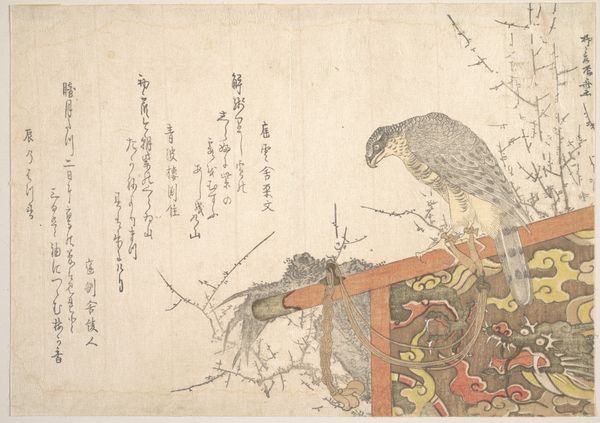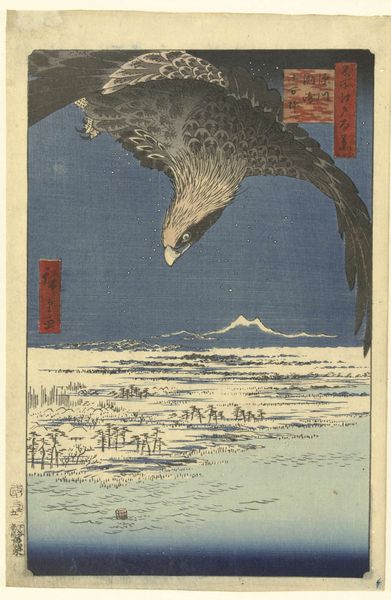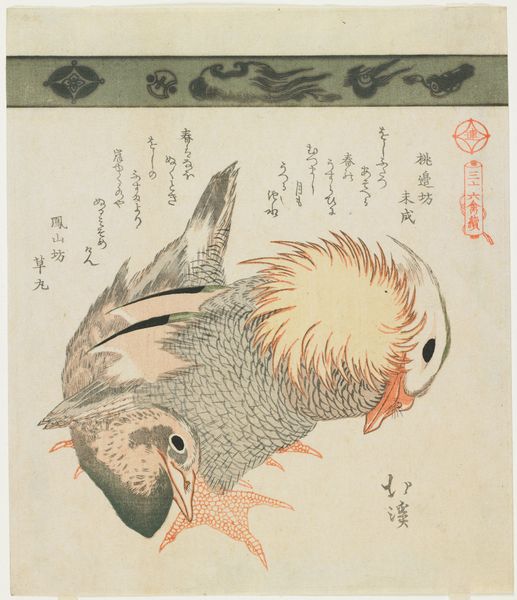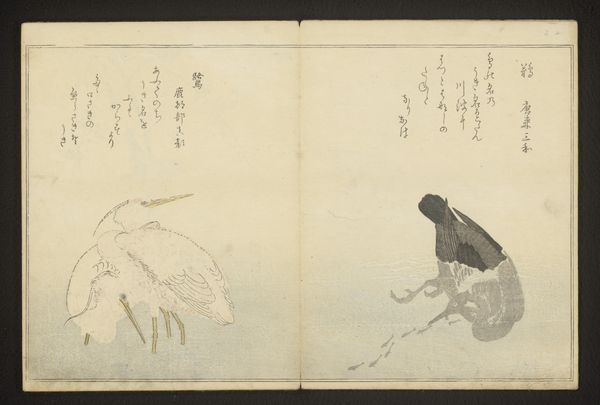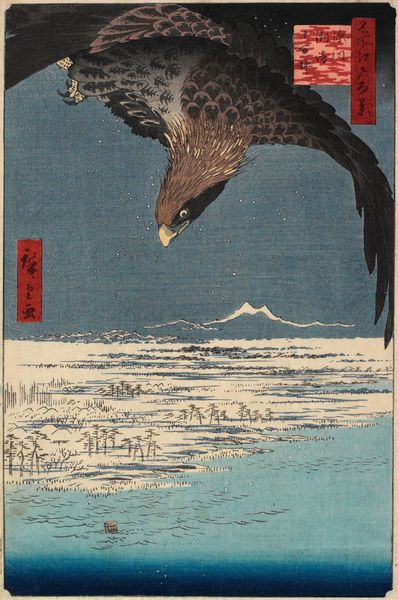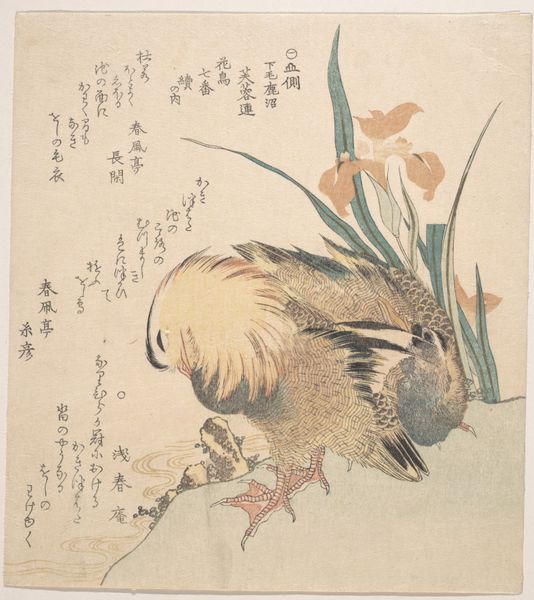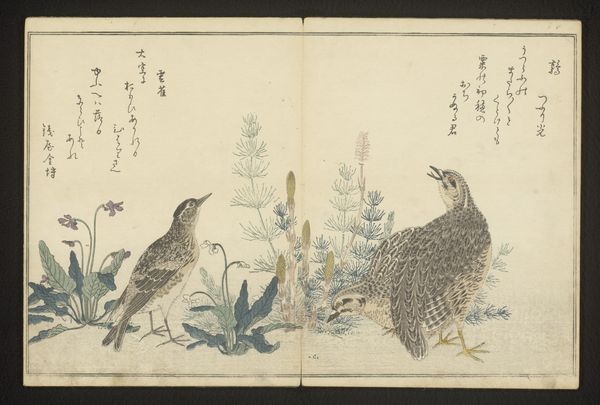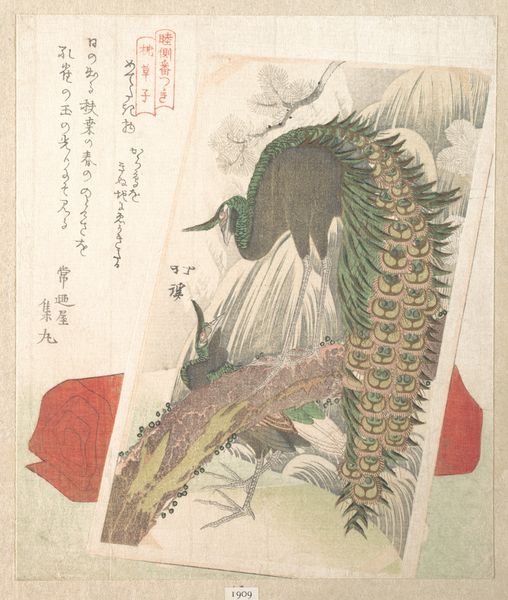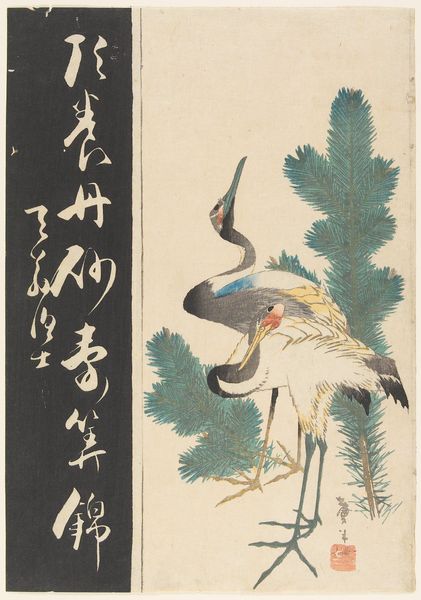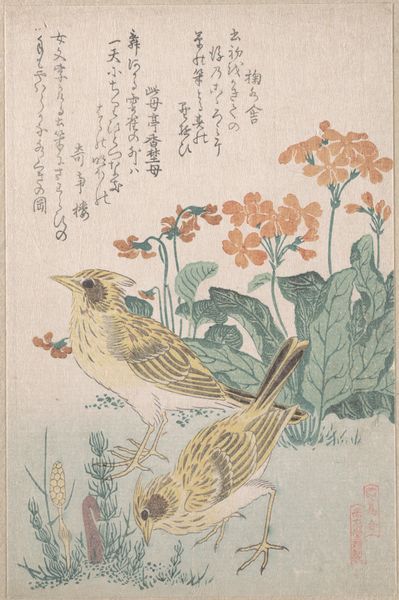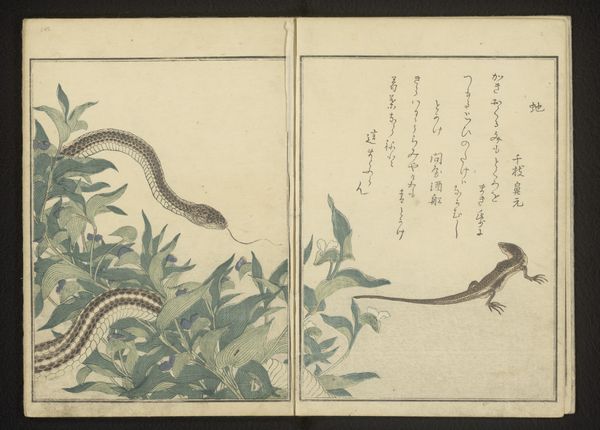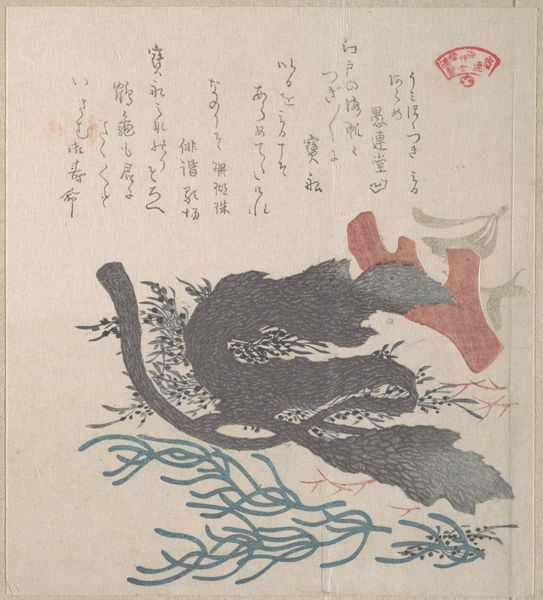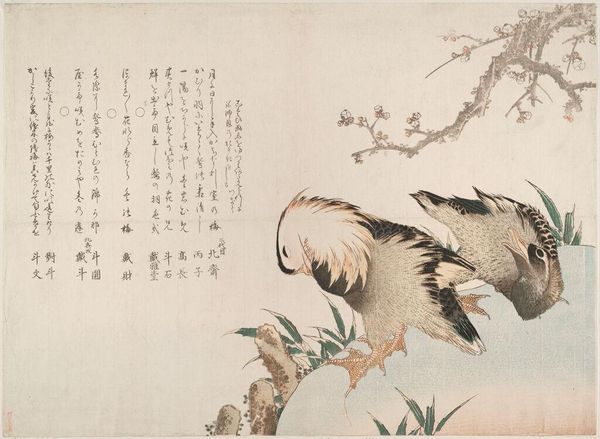
Dimensions: Overall: 9 15/16 × 7 1/16 in. (25.2 × 18 cm)
Copyright: Public Domain
Curator: It’s a startling contrast, isn’t it? That hawk, so still against the dynamism of the sea. Editor: Absolutely. "Picture Album of Various Birds," or "Shūchō Gafu" by Numata Kashū, created in 1885, showcases Ukiyo-e traditions using woodblock print techniques. It resides here at the Metropolitan Museum of Art. Curator: Notice the meticulous detailing of the hawk’s feathers, rendered in such precise linework that you almost feel you could reach out and touch it. The composition juxtaposes the texture of the bird against the rhythmic, almost abstract waves, drawing the viewer's eye into a fascinating dance of form and space. Editor: Yes, and considering this is a print, think about the intensive labor—the carving, the inking, the precise layering of colors in the workshop. Ukiyo-e prints like these weren’t merely artistic expressions but products of a complex, industrialized system. They were crafted by skilled artisans catering to a burgeoning merchant class with disposable income. Curator: Indeed. Beyond its production, observe the use of perspective, pushing the rock towards us, while the sea expands. This formal choice invites an immediate engagement, placing the viewer right there, on the edge of the water with the hawk. It creates a unique visual experience. Editor: Precisely. And the print's availability shaped art consumption then, reaching people outside the aristocracy. This changed art’s function, weaving it into everyday life. We also should remember this print was bound as a page in an album alongside many others depicting a broad sampling of birds. This context would affect our understanding, perhaps meant to be leafed through for educational, spiritual, or pleasureful purposes. Curator: A remarkable observation. Seeing the artistic choices—the textures, composition, and thematic oppositions of stillness against movement – allows us to understand its inherent complexities. Editor: Examining it in this context shows the power of art not only to delight the eye but also to reflect the material realities of its making and circulation. Thank you, that insight allows one to view the print with a broader view.
Comments
No comments
Be the first to comment and join the conversation on the ultimate creative platform.
